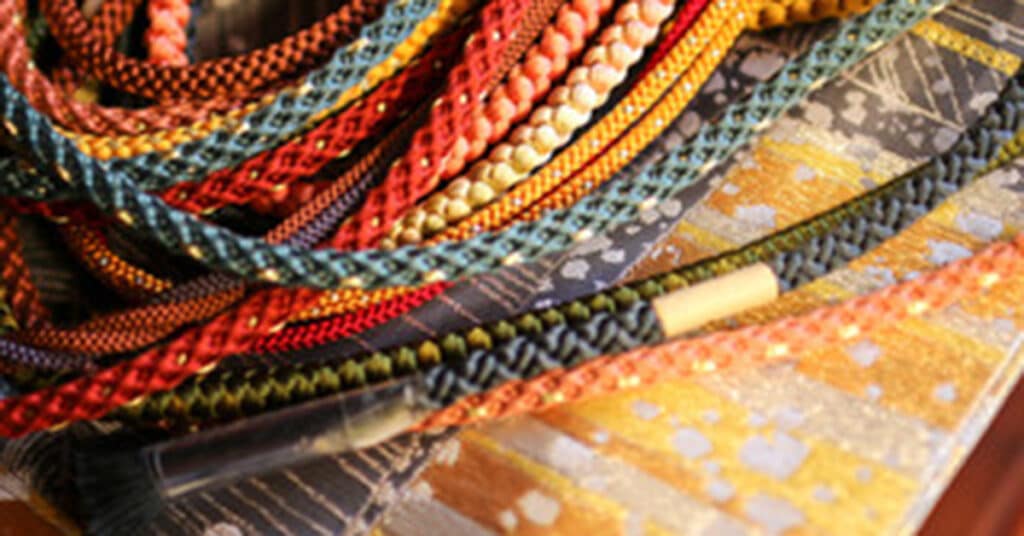Nishijin-ori, a textile tradition passed down for over a thousand years in Kyoto’s Nishijin district, is renowned for its intricate craftsmanship and timeless beauty, with a history spanning more than 1,200 years. Internationally, this form of weaving—referred to broadly as “textile”—has gained attention in the field of spatial design, with prestigious brands such as Dior, Chanel, Hermès, and Cartier incorporating it into the interiors of their boutiques.
Innovative Applications of Nishijin-ori in Spatial Design
With its diverse techniques and intricate patterns, Nishijin-ori is now being reimagined as a contemporary interior fabric. For example, Watabun Co., Ltd., known for its expertise in obi weaving, has expanded its craftsmanship into the creation of interior textiles such as tapestries and art panels. Works like “Full Moon” and “Sand Ripples” skillfully incorporate the fukure-ori technique—one of Nishijin’s signature methods—bringing out a sense of depth, texture, and luster that transforms the fabric into an artistic centerpiece.
In addition, the brand KYOGO, developed by Kaji Orimono Co., Ltd., offers interior fabrics that blend traditional Nishijin weaving techniques with contemporary design. At its exhibition in ESPACE DENSAN, a Paris-based showroom in France, the brand showcased a wide range of products—including wallpapers, fabric panels, cushions, and shades—garnering high praise from international audiences.
Creating New Value Through Upcycling
Efforts to incorporate modern sensibilities into traditional materials and techniques are gaining attention—particularly through upcycling initiatives. One notable example is the collaboration between PLASTICITY, an upcycling brand that repurposes discarded vinyl umbrellas, Mori Hideshoku Co., Ltd. (a producer of Kiryu textiles), and creator Emi Arihisa. Together, they have developed and released a multi-shoulder case inspired by Kiryu-ori, reimagined through innovative redesign.
A Future Shaped by the Fusion of Tradition and Modernity
Nishijin-ori continues to evolve by merging time-honored craftsmanship and aesthetic sensibilities with contemporary design and technology, creating new forms of value.
One such example is Momono Hachian in Atami, located in the prestigious villa district of Kasuga-cho. Formerly an annex of a long-beloved ryokan, the 85-year-old building had been abandoned for five years before being restored and renovated into a curated hotel. In this revitalized space, Nishijin-ori fabrics designed by Jotaro Saito are used for the sofas and black salon chairs, achieving a refined balance between tradition and modern style.
However, due to a lack of successors in Japan, the overall kimono market has shrunk to one-fifth of its size over the past 30 years, and the market for high-end obi textiles—central to Nishijin-ori—has declined to just one-tenth. In response, more ateliers have begun embracing mechanization in a bid to preserve their craft.
We hope that the renewed attention on Nishijin-ori’s limitless potential will help convey its value and ensure its continued legacy for generations to come.
GARDE Design Magazine provides project portfolio, trends in architecture, design, and art, and event information.
The project portfolio and the latest information on GARDE are now available on our official website.
>Click here to visit our project portfolio.
>Click here for the latest information on GARDE

